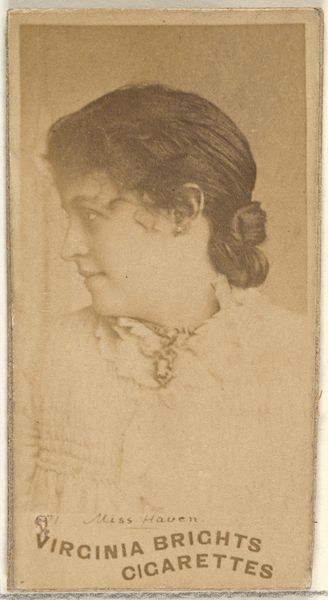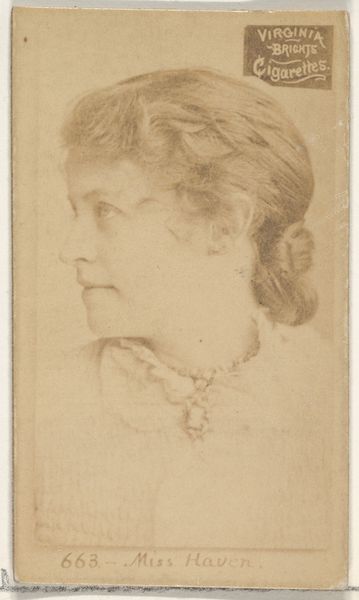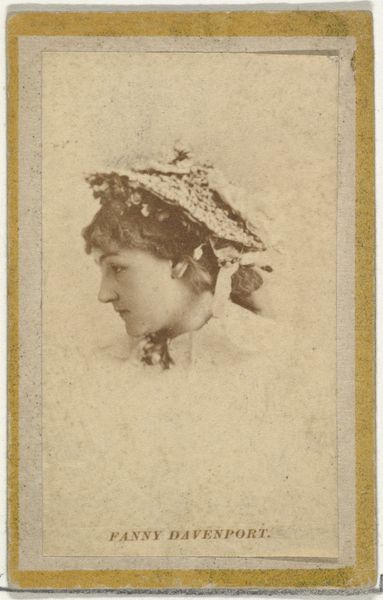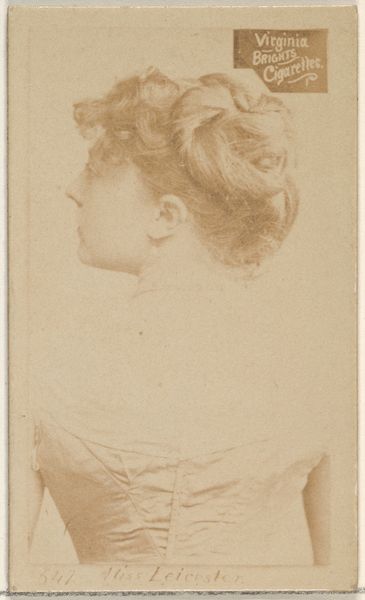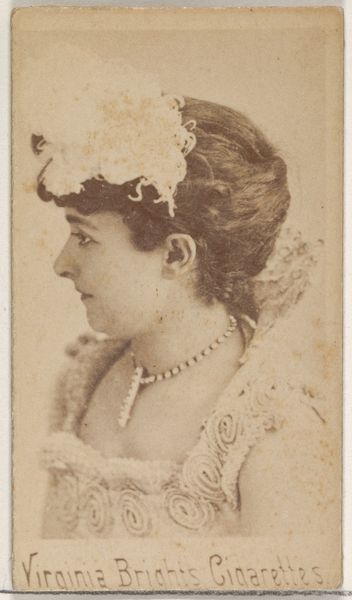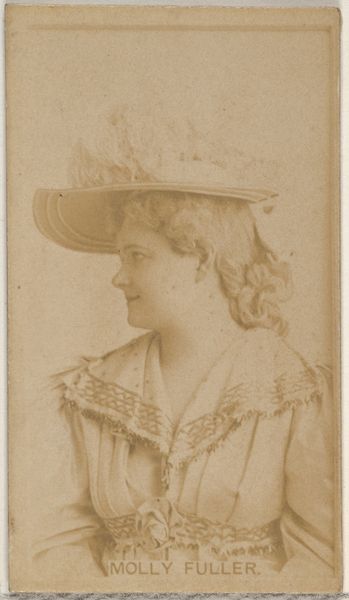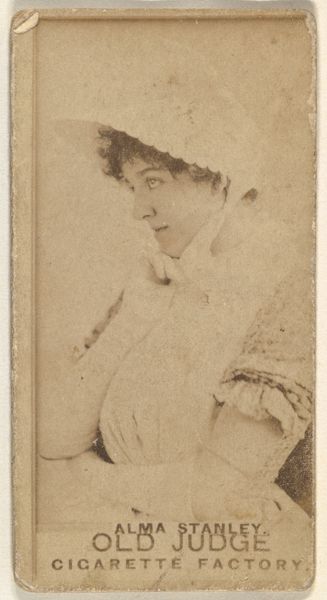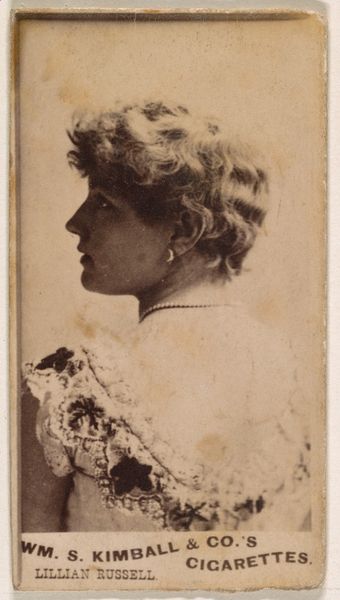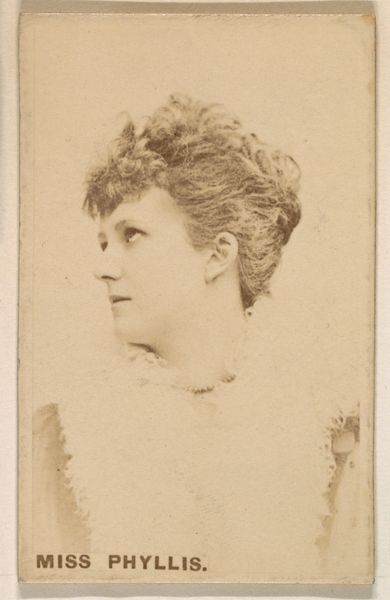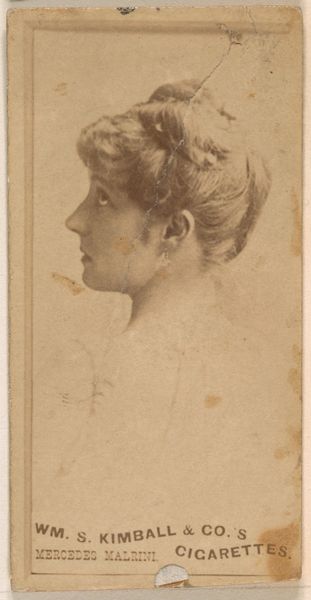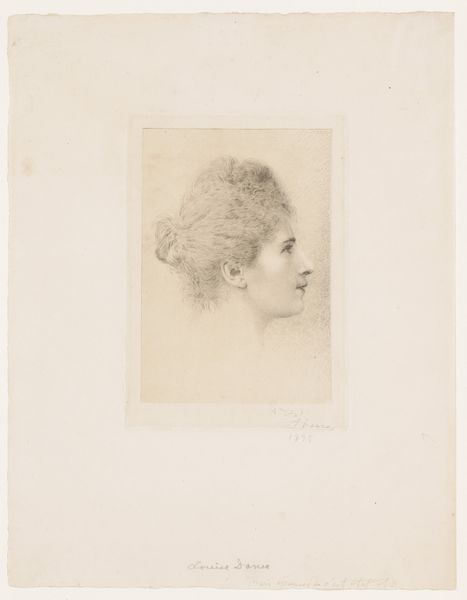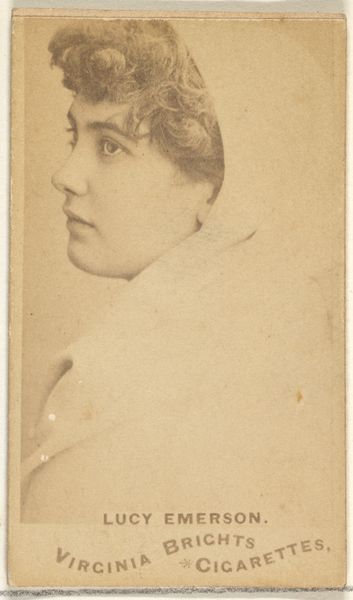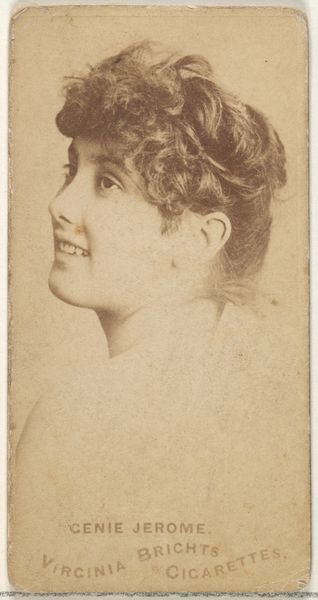
Card 665, Miss Haven, from the Actors and Actresses series (N45, Type 2) for Virginia Brights Cigarettes 1885 - 1891
0:00
0:00
drawing, print, photography, collotype, gelatin-silver-print
#
portrait
#
drawing
#
pictorialism
# print
#
charcoal drawing
#
photography
#
collotype
#
coloured pencil
#
gelatin-silver-print
Dimensions: Sheet: 2 3/4 x 1 3/8 in. (7 x 3.5 cm)
Copyright: Public Domain
Editor: So, here we have "Card 665, Miss Haven, from the Actors and Actresses series" made between 1885 and 1891 by Allen & Ginter, a cigarette card featuring a woman's portrait, rendered using collotype and gelatin silver print techniques. It has such a delicate, almost faded quality. What do you see in this piece, particularly considering its origin as a collectible item packaged with cigarettes? Curator: I see a fascinating intersection of industrial production, consumer culture, and the construction of celebrity. These cards, mass-produced using photographic and printing technologies like collotype, weren't just art; they were promotional tools. They demonstrate how images of women, particularly actresses, became commodities to sell tobacco. How does this shift our perception of "high art" portraiture? Editor: That's really interesting. I hadn't thought about the actress's image being a commodity in itself. How does the materiality of the card, something cheap and disposable, affect its perceived value as art? Curator: Precisely! It challenges traditional art boundaries. We usually value unique, handmade objects. But here, the value comes from its mass appeal and the very process of its distribution. Think about the labor involved – from the photographers and printers to the factory workers packaging cigarettes with these cards. The glamour of the actress contrasts sharply with the often unseen, and underpaid, labor that brought her image into circulation. Can we ignore this labor when we look at the final object? Editor: No, I see your point. The mass production and distribution are central to understanding the artwork. Considering how pervasive these cards were, it must have affected ideas around celebrity and beauty during that period. I guess I had never really thought about it that deeply. Curator: Exactly. Analyzing art from a materialist perspective forces us to consider not only the image itself, but the entire system that produced it, distributed it, and gave it meaning. It allows us a deeper appreciation for the social and economic contexts surrounding even the seemingly simplest of images. Editor: I definitely have a different perspective on it now. Thanks!
Comments
No comments
Be the first to comment and join the conversation on the ultimate creative platform.
